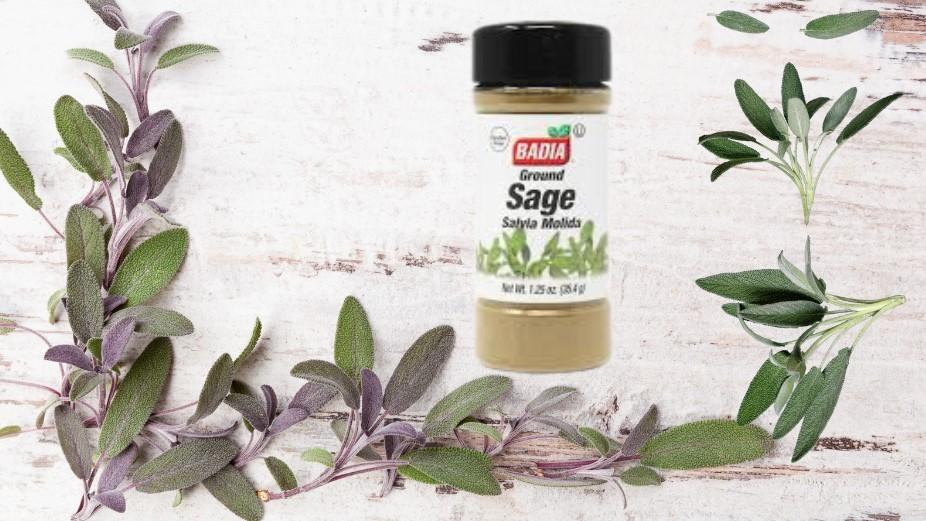Sage seasoning is derived from the leaves of the sage plant, an aromatic herb closely related to mint, thyme, and oregano. Recognized for its elongated silver-green leaves, sage delivers a warm, slightly peppery, and earthy fragrance. When dried and ground, its essence intensifies, making it a staple in robust dishes like roasted vegetables, stuffing, and flavorful meat marinades.
Beyond its culinary uses, sage is also revered for its aromatic properties in herbal teas, essential oils, and traditional remedies. For those who love to explore bold flavors, sage seasoning is an indispensable kitchen companion.
The History and Cultural Significance of Sage
Sage has been valued for millennia, with origins tracing back to the Mediterranean. The Romans and Egyptians cultivated it not just for cooking but also for medicinal and spiritual purposes. Regarded as a sacred herb, it was believed to have healing properties, strengthen memory, and provide protection.
The term “sage” is derived from the Latin word salvere, meaning “to heal” or “to save.” This historical significance shaped its widespread use across cultures. While Europeans incorporated sage into festive dishes, Native Americans used it in purification rituals, and Eastern medicine embraced it for its detoxifying benefits.
Today, sage continues to bridge tradition and modern culinary innovation, enhancing dishes worldwide with its unique flavor profile.
How to Use Sage in Cooking
1. Herb-Infused Roasted Vegetables
Ingredients: Potatoes, carrots, or squash; olive oil; salt; pepper; sage seasoning. Method: Toss chopped vegetables with oil, spices, and sage. Roast at 400°F (200°C) for 25-30 minutes until golden brown. The sage imparts a cozy, woodsy aroma, enriching the natural sweetness of the veggies.
2. Classic Sage Stuffing
Ingredients: Bread cubes, butter, onion, celery, thyme, parsley, sage. Method: Sauté onion and celery in butter, then mix in herbs and bread cubes. Bake with broth for a hearty stuffing that embodies the comforting flavors of home-cooked meals.
3. Savory Sage Meat Marinade
Ingredients: Olive oil, lemon juice, garlic, sage seasoning. Method: Coat meats such as chicken, pork, or lamb with the marinade and let it rest for an hour before grilling or roasting. The sage lends a peppery, slightly floral depth to the dish.
DIY Sage Seasoning Blend
Making your own sage seasoning ensures freshness and allows you to customize the flavors.
Ingredients:
- 4 tbsp dried sage leaves
- 2 tbsp salt
- 1 tbsp black pepper
- 1 tbsp garlic powder
- 1 tbsp onion powder
- 1 tbsp dried thyme
- 1 tbsp dried rosemary
Instructions:
- Finely grind the dried sage leaves.
- Mix all ingredients in a bowl and stir well.
- Store in an airtight container in a cool, dry place.
- Use to season meats, vegetables, or soups as desired.
Fresh vs. Ground Sage: Key Differences
| Aspect | Ground Sage Seasoning | Fresh Sage |
|---|---|---|
| Flavor Intensity | Strong, concentrated | Milder, fresher |
| Texture | Fine and powdery | Soft and slightly fuzzy |
| Shelf Life | Up to six months | Best used within a week |
| Best Uses | Dry rubs, marinades | Garnishes, infusions |
Understanding these distinctions helps in selecting the right form of sage for each recipe.
Sage in Global Cuisine
Spanish Dishes Featuring Sage
- Sopa de Ajo (Garlic Soup): Adds depth to this rustic, hearty broth.
- Chorizo con Hierbas: A seasoning component in some Spanish chorizos.
- Cordero Asado (Roast Lamb): Combines with rosemary and thyme for a rich, earthy flavor.
- Pisto Manchego (Spanish Ratatouille): Enhances the natural sweetness of tomatoes and peppers.
Arabic Cooking with Sage
- Za’atar Blends: Combines with sumac and cumin for an aromatic seasoning mix.
- Herbal Rice Dishes: Infuses traditional dishes like Maqluba with a warm, herbal undertone.
- Lentil Soups: Enhances the depth of classic Middle Eastern soups.
- Meat Stews: A slow-cooked addition to lamb and beef tagines.
Creative Ways to Use Sage Daily
- Sage-Infused Olive Oil – Let dried sage steep in olive oil for a week and use it as a drizzle for salads or bread.
- Sage Butter – Blend softened butter with chopped sage for a rich, herbaceous spread.
- Sage-Crusted Meats – Coat meats with sage, breadcrumbs, and Parmesan for a crispy, flavorful crust.
- Sage-Enhanced Mashed Potatoes – Stir sautéed sage leaves into mashed potatoes for a warm, aromatic twist.
- Sage Tea – Brew fresh or dried sage in hot water for a soothing herbal infusion.
Final Thoughts
Sage seasoning is more than just an herb—it’s a culinary bridge between tradition and innovation. Whether used in a classic holiday stuffing, an everyday vegetable dish, or an experimental fusion recipe, sage brings an unmistakable depth of flavor. Experiment with fresh and dried forms, blend your own seasoning mix, and explore its global applications to unlock new layers of taste in your cooking.



